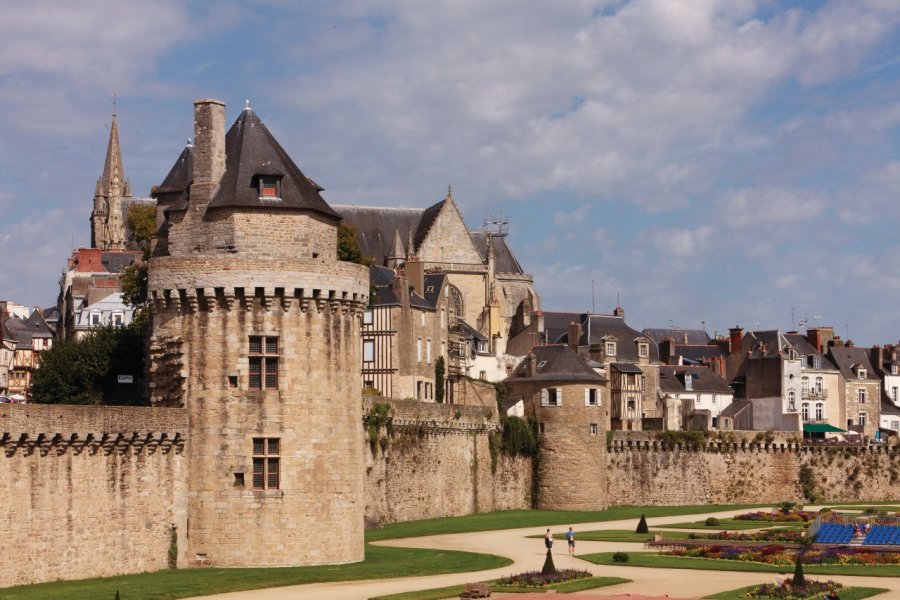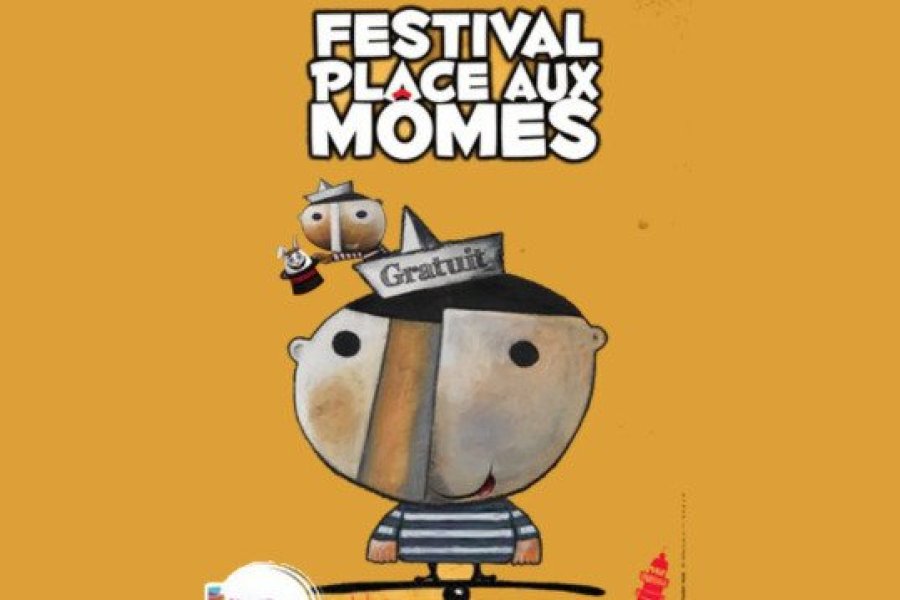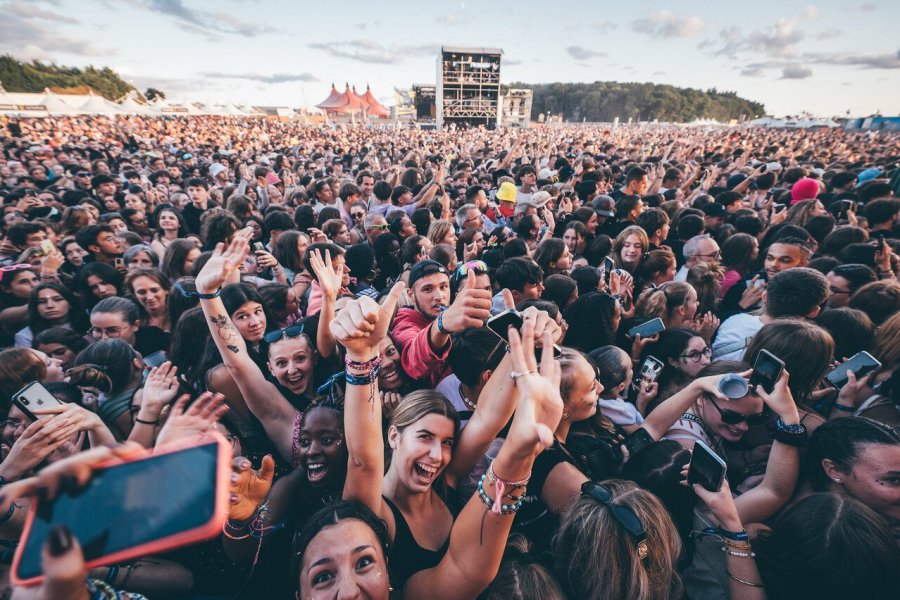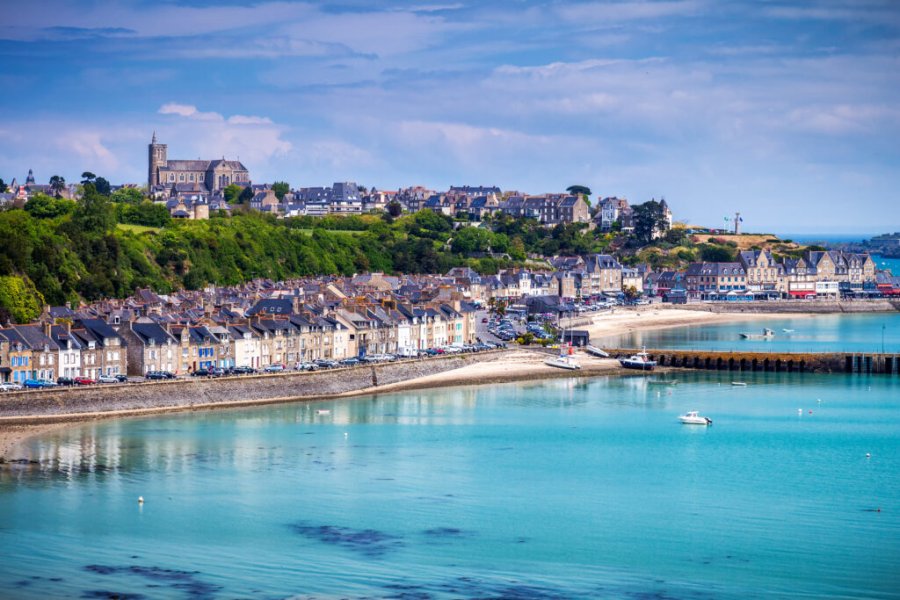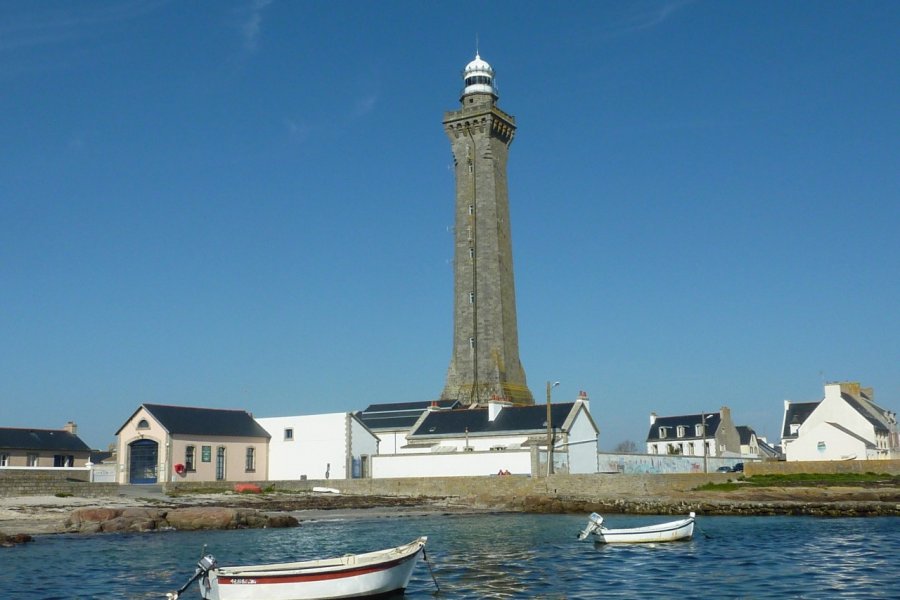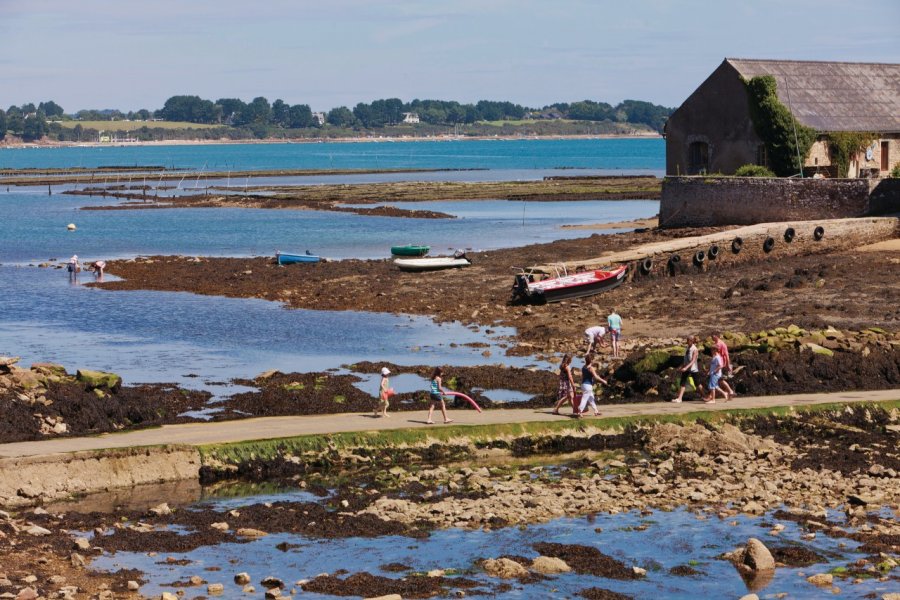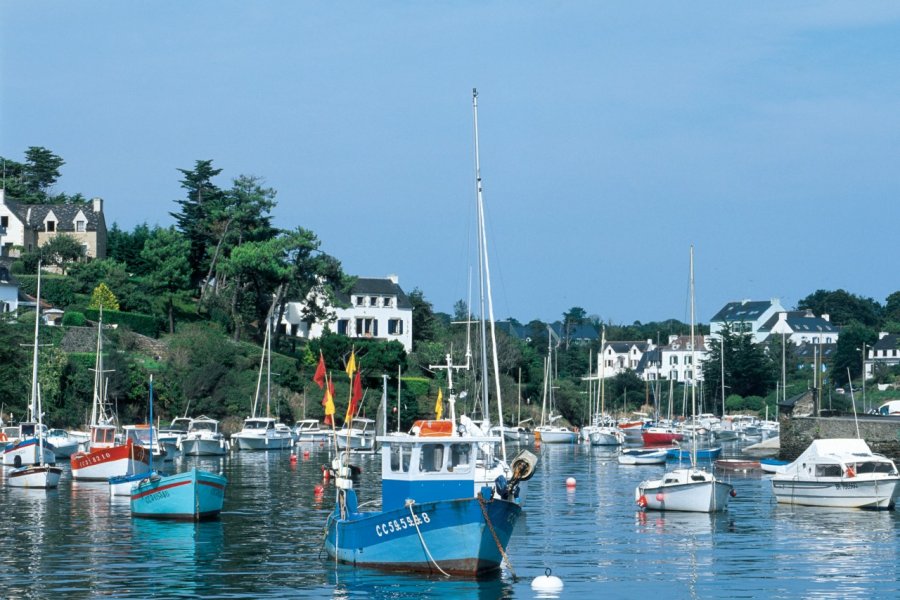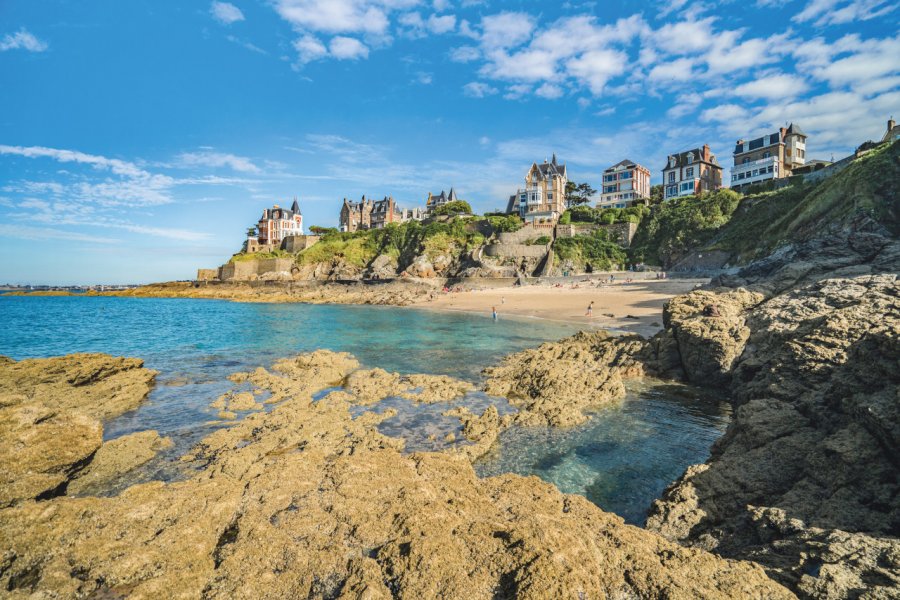Travel guide Brittany
Brittany is a French region made up of four very different departments, yet united by this common belonging: Côtes-d'Armor, Finistère, Ille-et-Vilaine and Morbihan. A vacation destination par excellence, Brittany has fishing ports and farmlands, tourist sites and mysterious places, woods and forests, stories and legends, museums and leisure parks. It is a land of contrasts that offers a real patchwork of places to discover. You can come here to practice nautical activities, participate in the numerous music festivals, such as the Interceltic Festival or the Vieilles Charrues. Brittany will present you its chapels, but also its menhirs and its dolmens... It will also let you discover its islands: Belle-Île-en-Mer, Bréhat, Ouessant, Molène, Groix, Les Glénans... Brittany can also be explored on foot on the thousands of kilometers of hiking trails, such as the GR 34, which runs along the coast for nearly 2,000 km! From Cap Fréhel to the Pointe de la Torche, from the pink granite coast to the "abers" of Finistère, fromOcéanopolis in Brest to the zoo of Pont-Scorff, from the medieval city of Dinan, in northern Brittany, to the Gulf of Morbihan, in southern Brittany, passing through the forest of Brocéliande and the Armorican Massif, without forgetting the bay of Mont Saint-Michel and the Bigouden country. A tourist guide on Brittany will make you discover all kinds of natural sites, but also accommodations, restaurants where you can taste delicious pancakes, kouign-amann, oysters and other sea products...
What to see, what to do Brittany?
-
Book an activity
-
Customized travel
- The most beautiful cities Brittany
When to go Brittany ?
Brittany can be visited all year round, but depending on your desires, it may be interesting to target one period rather than another. Here are some tips on when to go to Brittany.
High tourist season: in July-August, this corresponds to the summer vacations for all French people. This is when the Breton coastline is the most visited. Almost everywhere, in Côtes-d'Armor as well as in Finistère and Morbihan, people practice sailing, surfing, swimming or simply lazing around. Hikers are also legion on the GR34 and the Breton islands are filled with summer visitors. Of course, hotel rates increase during this period and travel is more complicated.
Mid-season: April-June and September are often pleasant months for a trip to Brittany and less crowded. It is therefore the best time to travel to Brittany. Of course, those who wish to swim should aim for the beginning of September, when the water is still a little warm. Walkers and sailors will take advantage of these calmer months to enjoy the Breton nature.
Low tourist season: October to March. The weather is generally bad during this period, even if the temperatures remain mild. December and January are often rainy months. But in Brittany, there is nothing to stop you from going for a walk, a good raincoat, boots, and you are ready!
Suggested addresses Brittany
Travel Brittany
-
Find a hotel
-
Car Rental
-
-5% on travel insurance-15% off travel insurance
-
Find a local agency
La Bretagne se prête à tous types de voyages, des courtes escapades aux longues vacances, en itinérance ou en étoiles. Si vous voulez rayonner sur toute la région, choisissez un ancrage central : depuis Lorient, Saint-Brieuc ou le centre-Bretagne, beaucoup de points d'intérêt sont accessibles en 1h à 1h30. Destination nature, la Bretagne offre diverses activités extérieures : pêche à pied, virées en bateau, sports nautiques, randonnées au long cours à pied ou à vélo... C'est aussi une destination familiale, où les enfants apprécieront les légendes, les châteaux et les aventures au grand air. De multiples courts séjours sont possibles, d'autant que la région est bien desservie par le train et que tous les TER bretons acceptent les vélos à bord : citybreak à Rennes ou à Brest, virée à Vannes et dans le golfe du Morbihan ou encore week-end détente à Saint-Malo, entre thalasso, plage et balades sur la côte d'Emeraude.
Find unique Stay Offers with our Partners
Discover the bike tours Brittany
Featured articles Brittany
Events
Vous rêvez d’une escapade en Bretagne mais vous ne savez pas où aller ? Pas de panique, nos partenaires vous proposent des solutions pour organiser votre voyage en Bretagne. De Saint-Malo à Quimper en passant par Rennes ou le Grand Hôtel de Perros-Guirec, partez découvrir les trésors de la Bretagne sans plus attendre.
Discover Brittany
With your nose to the wind and your heart at high tide, more than one unusual experience awaits you on this peninsula bathed by the Atlantic Ocean. Stay in a lighthouse, a troglodyte or in Calamity Jane's ranch, or why not on a deserted island? Spend the night on a deserted islet off the coast of Molène in one of the two old seaweed dwellings, transformed into gites. Or practice glamping between land and sea.
Pedal on the velorail of Kreiz Breizh, take your children to play captain by sailing in the miniature harbor of Perros-Guirec, on a trawler, a fire boat or a lifeboat. Go to the end of the quay in the port of Binic-Etables-sur-Mer to the Crab Shack. Follow the Sardine Trail, learn how to make real Breton pancakes, learn about privateer cuisine and enjoy! Admire the sculpted rocks of Rothéneuf and the incredible Valley of Saints in Carnoët. Quite a program!
Pictures and images Brittany
The 12 keywords Brittany
1. # Bzh
It's a contraction of Breizh, the Breton name for Brittany. This acronym, which appeared in the 1960s on stickers on the back of cars, is a way of marking its attachment to the region: it can be found on souvenirs, on social networks with the hashtag #bzh or as a domain extension for websites (.bzh).
2. # Drizzle
It's true: sometimes, from time to time, it does rain in Brittany. Rarely a heavy downpour. Rather a small, fine, tight, penetrating and persistent rain: the famous drizzle. Characteristic of oceanic shores, these light rains do not prevent walks: they make them invigorating and nebulous, magical.
3. # Fest-noz
Resurrected in the 1950s, now classified as an intangible heritage of humanity by UNESCO, the fest-noz ("night party" in Breton) is a kind of ball, where Breton dances are performed in groups, to live music of traditional inspiration. Very popular, intergenerational and convivial events. Invigorating!
4. # Glaz
This Breton word, which is also spelled "glas", has no equivalent in French. It designates a palette of colours, between blue, green and grey. A nuance inspired by the Breton sea, with ever-changing hues, depending on the clouds, the sun, the season... An adjective full of poetry and fascination for this chameleon sea.
5. # Granite
Pink, blond, grey or bluish, granite is omnipresent in the region. This very hard rock forms a large part of its base and its coasts. Granite has been used to build many houses, castles, menhirs... It is also found, polished by erosion, in the enchanting chaos of the Pink Granite Coast or the forest of Huelgoat.
6. # Gwenn ha du

This is the name of the Breton flag, literally "black and white". Created in 1923 by an autonomist, it consists of black and white stripes with ermines in the left corner. It has lost its political connotation to become a popular emblem and today it flies in many festivals and gatherings, like proud little winks.
7. # Korrigans
They are the protagonists of Breton tales and legends. At night, these mischievous dwarves can play very bad tricks on humans, especially if they are disrespectful or reckless. But they also know how to be kind to those who deserve it. Rich and strong, they hide in caves, dolmens, moors or woods.
8. # Menhir

Brittany is the region that concentrates the greatest number of these standing stones, lined up like in Carnac or isolated in the countryside. Besides, the word is taken from the Breton: men (stone), hir (long). Erected from the5th millennium BC, these megaliths had a symbolic function, which remains mysterious even today.
9. # Browsers

A land of fishermen and sailors, Brittany has given birth to many great sailors: the discoverer of Canada Jacques Cartier, the Malouin corsairs Duguay-Trouin and Surcouf, the explorer of the sub-Antarctic islands Kerguelen... Nowadays, the heroes of the seas are those of ocean racing, such as Olivier de Kersauson and Armel Le Cléac'h.
10. # Headlight
A third of the lighthouses in France are in Brittany. It is even the region of the world that concentrates the most of them! Emblems of the coastal landscape, planted in the open sea or on rocky points, these stone sentinels fascinate and remind us of the reefs of the waves. Each lighthouse has its own history, architecture and light signal.
11. # Buckwheat

This plant, which is not a cereal despite its nickname of buckwheat, has long been a staple of the Breton diet: porridges, kig ha farz... Not forgetting the ever-popular galette! Growing in poor soils, buckwheat was once a symbol of rural misery, but it's now making a comeback, cooked up by top chefs.
12. # Yec'hed mat
The local tchin-tchin! Two words known to everyone in the region, even those who do not speak Breton. Yec'hed means health, mate means good, good. But be careful with the pronunciation: the c'h, a specific letter of the Breton alphabet, is pronounced like the Spanish jota. And the end of the word is often abbreviated, which means: yermat!
You are from here, if...
You don't run for shelter at the first drop of rain and you complain about those who say that it rains all the time in Brittany: you like the saying that "the weather is fine several times a day".
You don't mind swimming in an 18 degree sea. Your mantra: "Once in, it's good!
You know how to deal with the tide times and don't get trapped.
The yellow raincoat-blue boots combo is not necessarily part of your wardrobe. But you may have a sailor's jacket or some kind of fisherman's clothing.
You know a gull from a seagull: the former is bigger, has a red spot on its beak and squints at your sandwich.
You don't eat mussels in winter or scallops in summer: it's not the season!
You swear by salted butter. Sweet? A sacrilege!
You like to fly your Gwenn ha du flag at festivals or stadiums.

